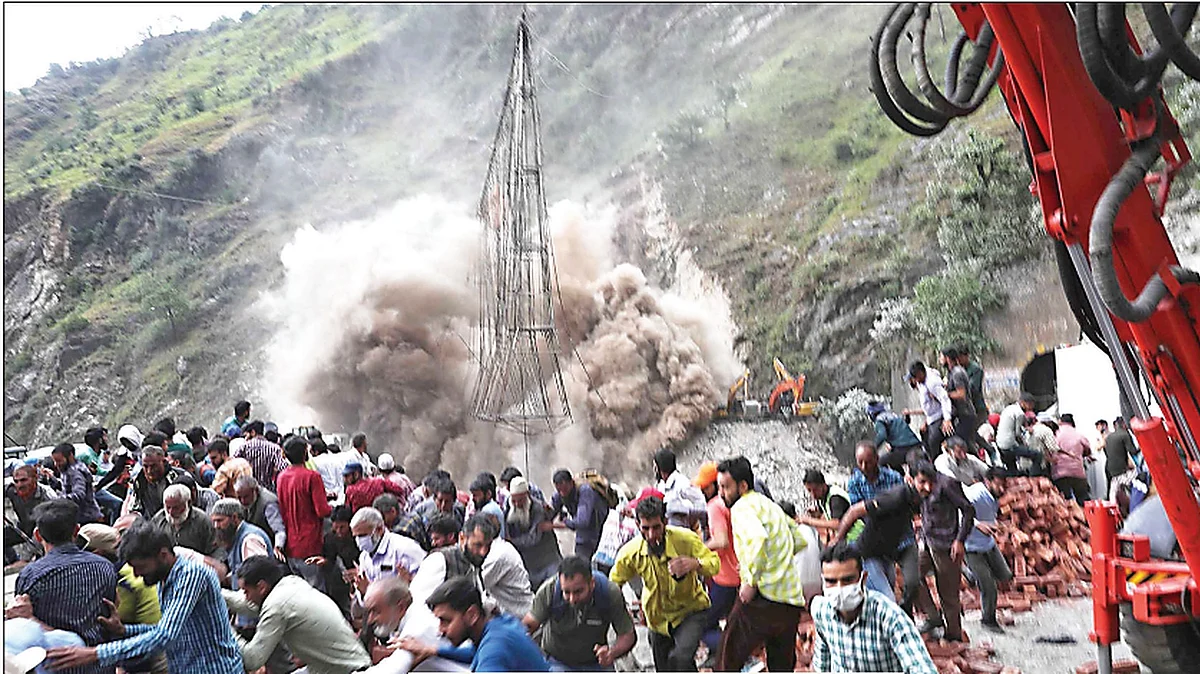Kedarnath tragedy all but forgotten, Uttarakhand pays for ‘development’ with lives
The heedless destruction of mountains for ‘development projects’ has reached alarming proportions. A 2018 study identified 6,300 landslide zones in the state

There were 33 landslides reported in Uttarakhand in 2015. The number was 970 five years later in 2020. That’s a mind-numbing 30-fold increase in the number of landslides in just five years.
The monsoon this year has been particularly severe with flash floods and hundreds of cases of debris falling on roads, blocking them not just for hours but for days. The all-important road connecting the Indian mainland to the border with China in Chamoli remained closed for two weeks as a series of landslides between Joshimath and Malari, at Tamkanala and Jumma brought traffic to a standstill.
In the second week of August, the national highway to Badrinath was closed after falling debris and stones from mountains stopped traffic eight times in five days. On the Chamba-Uttarkashi highway, ministers were forced to walk when it became impossible for the SUVs to proceed.
On the Lambgaon-Uttarkashi road, 20 metre of the road close to the Mahed Devta temple collapsed into the Jalkur river below. The break in the road has forced people from Pratapnagar to take a 35 kilometre detour to reach Uttarkashi. Vehicles from Lambagaon were diverted through Syalgi and Bijpur.

Villagers in the Niti Valley near the Chinese border have been taking shelter in caves during the rains for the past several years as they report mountains cracking up. Late last month a large chunk of the mountain fell on a convoy of army trucks in the area. Luckily, major casualties were averted.
Nainital, the state’s popular tourist destination, has also been witnessing increasing incidence of landslides. Serious landslides have been reported from Balianala, China Peak, Mall Road, Kailakhan and Tiffintop Number Seven, where 150 people were killed in a mountain subsidence in 1880, when the population of the hill station was barely 10,000. The population in 2022 is close to a million.
In the early 20th century, the British government banned fresh construction in the area and cutting off grass, gardening or using ‘Sher ka Danda’ hilltop for grazing animals. Saplings were planted all over the place, old records document. But since then, reckless construction has taken place in the area.
Geologist prof B.S. Kotalia of Kumaon University attributes the active faults passing between Nainital and Naini lake as the reason for landslides and land slumps. He warns of dire consequences if the ever-increasing pressure of new construction in the city is not halted.
A study in 2018 jointly conducted by the World Bank and the Disaster Management Department of the Uttarakhand government identified as many as 6,300 places across the state as landslide zones. The report warned that steady destruction of forests and chipping away at mountains were causing the landslides.
This year itself 71 PWD roads and 86 routes under PMGSY were closed in the rainy season. In Champawat, the national highway was closed 104 times. There have been 14 incidents in Tehri this year as opposed to eight landslides in the same period last year.
The casual manner in which the mountains are being destroyed for ‘development projects’ has upset experts. Mountains, they point out, take thousands of years to form but their reckless and shortsighted exploitation for construction material could destroy them in less than a hundred years. Mountains are not just a mass of stones and minerals, the experts caution, but the mountains also determine the state of forests, water and air in the area. If trees are essential for life on earth, then mountains are also equally important for trees.
If the water conservation report prepared by the Department of Science and Technology and the NITI Aayog three years ago is to be believed, then 60 per cent of water streams originating in the Himalayas are drying up. Global warming or warming of the earth, carbon emissions and climate change have led to a serious existential crisis for glaciers that work as coolers of the earth.
The Kedarnath tragedy of 2013 is all but forgotten. The Himalayas, world’s youngest and living mountains, are crumbling slowly but surely at the onslaught by marauding contractors and policymakers driven more by greed than by need. Several projects that disrupt the ecological balance of the Himalayas are now posing a serious threat to the future of Uttarakhand.
Indeed, a cabinet decision taken by the Uttarakhand government in November 2019 sought to redefine a forest. Greenery spread over minimum 10 hectares of land with ‘60 per cent tree density’ and with ‘75 per cent local tree species’, the cabinet resolution held, will be deemed as forest.
Redefining a forest, experts agree, was designed to take out many forests from the category of forests so as to remove obstacles in the path of ‘development’. The disastrous result, they believe, is for everyone to see. Despite a phenomenal increase in landslides and warnings by expert bodies, no lesson is being learnt. Or else, 25,000 trees wouldn’t have been felled for ostensibly paving and widening the roads in the state.
A petition to the National Green Tribunal turned out to be futile as the NGT deferred the hearing on the ground that the trees had already been felled.
Follow us on: Facebook, Twitter, Google News, Instagram
Join our official telegram channel (@nationalherald) and stay updated with the latest headlines
